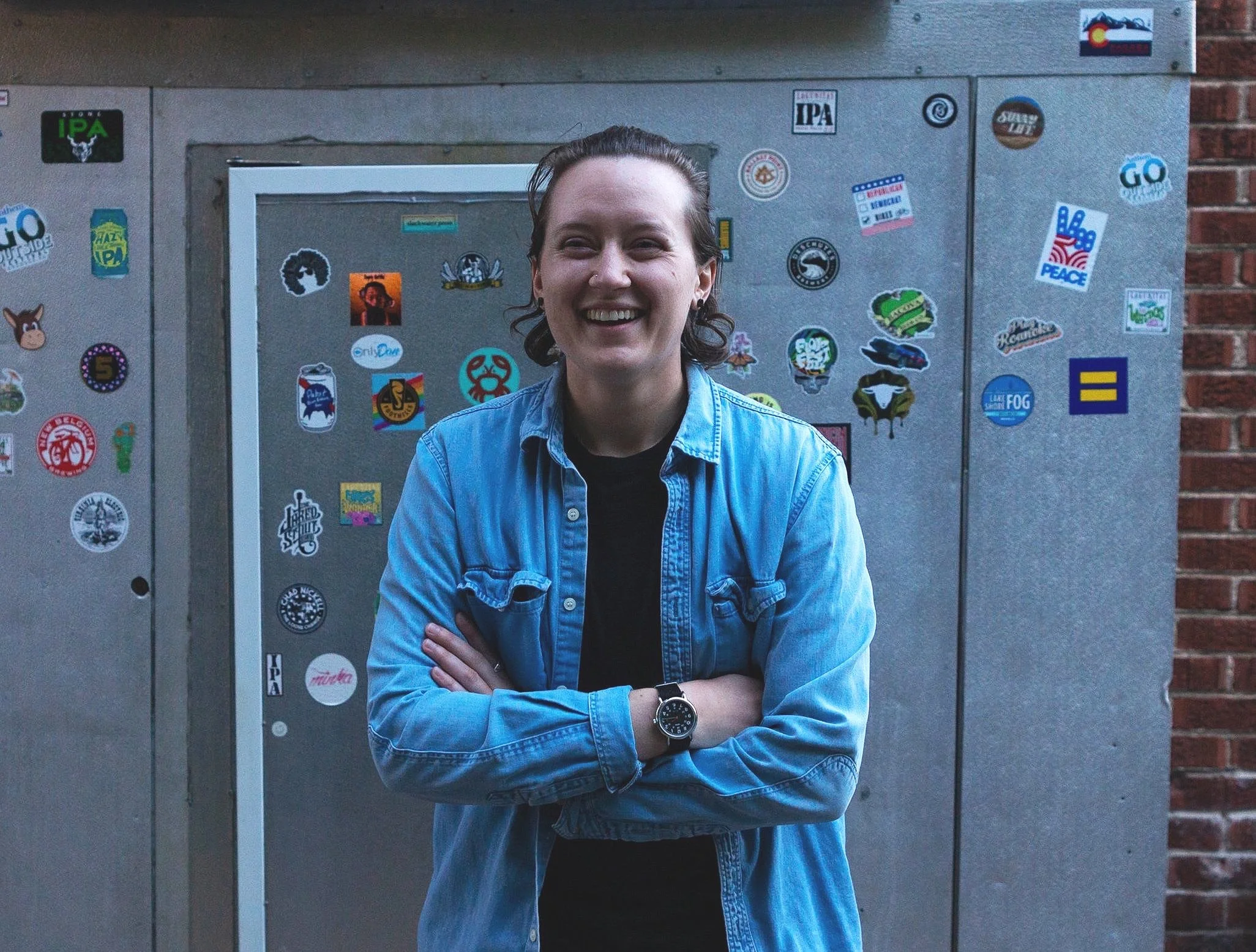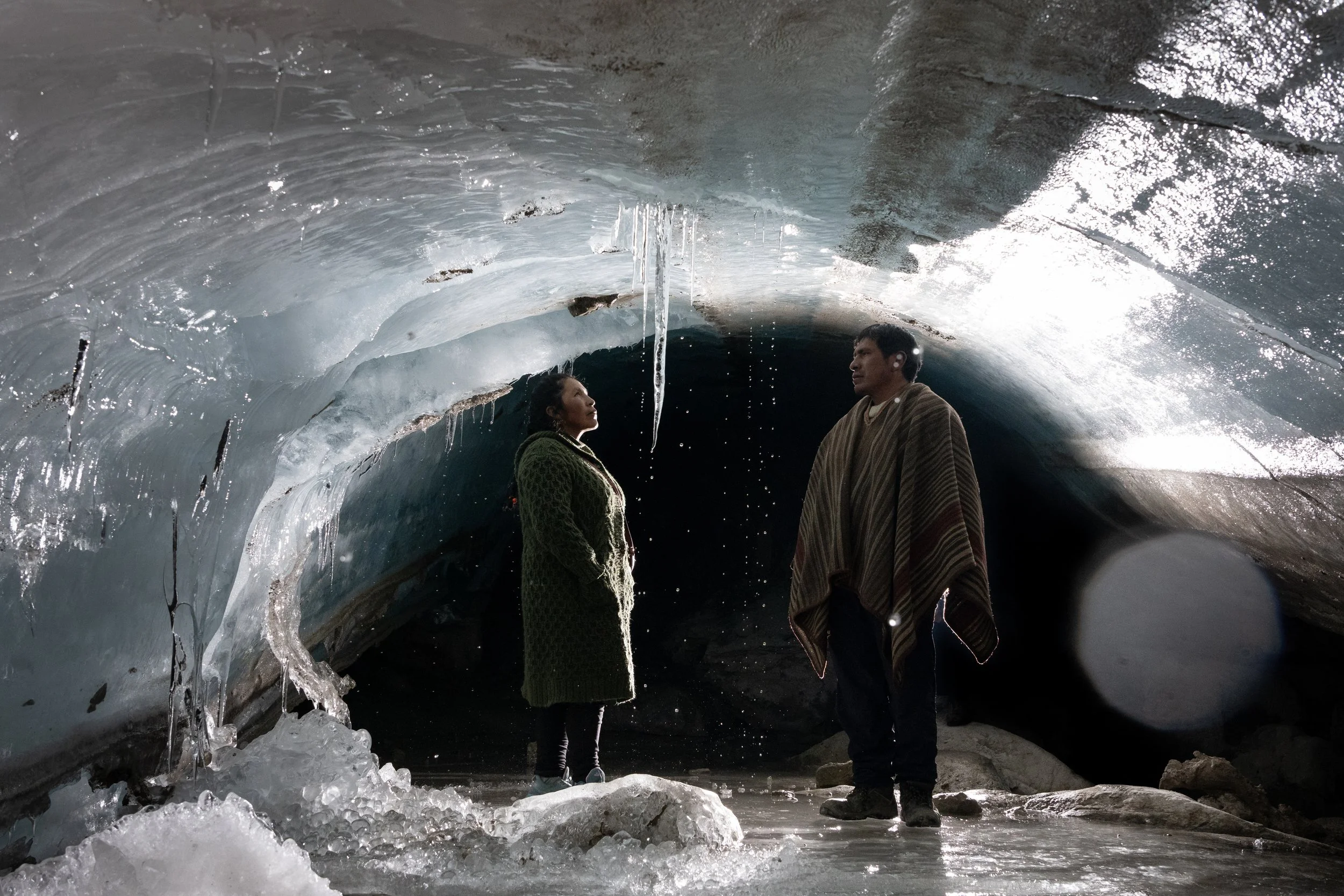Words by Christine Alexiou
It was 2015 and photographer Matt Stirn was on assignment with Photographers Without Borders. He was out with a group of researchers from Pro Eco Azuero looking for a rare type of spider monkey in the sweltering heat of the Panamanian forest. At the time, he was positive he knew what his story focus was. “I went down there imagining that I was going to take wildlife photos of spider monkeys and that was what the whole project was about…But during the whole trip we actually only had two 10 minute encounters with the monkeys over 14 days.”
One of those brief encounters produced a photograph of a baby monkey stretched out on a branch with only the tensile strength of his tail stopping him from falling. “…there was the mom who was trying to teach the baby monkey to jump from limb to limb. And at one point he just got too freaked out, wrapped his tail around the tree and basically just laid down and fell asleep because he couldn't take it anymore.”
Azuero Earth Project
Photo by Matt Stirn
Although he considers it one of his single favourite images from that trip, Stirn realized it wasn’t the most spectacular thing he left the project with. “We were off hiking in the jungle but spending time with farmers and villages and the research team of local Panamanians. And I ended up being almost more fascinated with their story and their passion for saving these monkeys and protecting their land. And that was something I hadn't thought about [prior to]”.
That was a turning point for Stirn in approaching any new work. “I've been working more and more to go into a project with kind of a blank slate, obviously doing research so I know what I’ll be photographing and knowing what the main theme is going to be. But other than that, just kind of moving more fluidly through it, seeing how it develops and where it takes me. And that's almost been more rewarding and more successful.”
Azuero Earth Project
Photo by Matt Stirn
The approach is proving a winner given Stirn’s career as a photojournalist is blossoming with features in such leading publications as National Geographic, BBC World News, The Boston Globe, Outdoor Photographer Magazine, and the American Archaeology Magazine.
But at only 31-years-old, photography is not his first career. “I've been doing archeology professionally since I was 13 years old.” The young teen worked as an excavator on a dig in his hometown of Jackson Hole, Wyoming and later graduated with degrees in anthropology and archeology. Since then he’s had the opportunity to work all over the world. “My first international archeology dig was actually looking for sunken shipwrecks in the Black Sea with Bob Ballard of Titanic fame.”
One thing that he took with him on all his trips was his camera. “I've always taken photos since I was young. Both my dad, and my grandfather were amateur photographers. We had a darkroom in our bathroom.”
Sunrise at String Lake, Wyoming
The stream was flowing swiftly, so even though it was around 14 degrees (F) out, I popped off my shoes and waded with my tripod and camera to a small rock near some rapids. My hope was to line up the shot so that the flowing water led into the sunrise hitting the Tetons. I wanted to add a little dynamicity to the image, so a long exposure making the water appear blurred seemed like a good approach. I was so startled that I almost dropped my camera into the freezing water and decided that perhaps the shore was a better place to sit.
Photo by Matt Stirn
It was his knowledge of photography that compelled him to forego the conventional “This is a broken pot. That's it. Very little context” documenting approach and sprinkle in some story. “You need to think of it almost as a spider web where you have that broken pot, but you need to start connecting it to other things in the past. Connect to modern-day, connected to the big question of why does it matter? Why do we want to save it?”
His articles and photographs started getting traction in the archeology community. “As I started to continue to work for other people and then lead into directing my own archeological projects, I discovered that a lot of people and publications were as much, if not, more interested in the photographs I was coming back with, the visual stories than like the data and the graphs and statistics that we were creating. And so I realized that photography offers this beautiful medium to kind of marry hard science and the story that you want to tell the world about it.”
The majority of Stirn’s work focuses on nature, conservation and emerging travel destinations. His work with Photographers Without Borders has taken him to Sumatra and Nepal and he’s also been on photography and archeology expeditions to Cuba, Greece and Peru among other countries. “I'm equally as fascinated with cultural conservation as I am environmental. And so that's not just preserving UNESCO World Heritage sites, but is looking at indigenous practices around the world that are being lost.”
Meteora, Greece.
It was one of the first times I remember looking at a scene, imagining a picture in my mind, and the final result being a success. I always look back at this photo as one of the moments and places that permanently hooked me into photography.
Photo by Matt Strin
That mission in preserving disappearing cultural practices through storytelling most recently took him somewhere he’s always wanted to go - northern Sudan. “They have twice as many pyramids as Egypt, but just nobody knows about it.”
It’s a country that most people currently associate with war and violence but Stirn is interested in spotlighting the positive which can often get left out of the standard news coverage. “[People think} it's dangerous, the people are very anti-Western and very violent, when in reality, sure there are pockets of that there that do exist in certain places. But the reality is if you can step beyond that and actually see it for what it is. It's this beautiful country with some of the kindest people I've seen anywhere. And that's a place that could really benefit from more visitors.”
While he agrees over-tourism can be destructive, there’s a flip side when it comes to benefitting places further off the beaten track. “They’re desperately seeking more visitors in [these remote places] so that people have more income that can be generated from showing off the landscape around them rather than exploiting it. And I think you can tell really engaging and really fascinating travel stories that way.”
This image was from a recent trip to Kenya, at the Ol Pejeta Conservancy. As we were driving on a dirt two track, we noticed two Egyptian Geese sitting on a branch and facing towards the sun as it rose over the slopes of Mount Kenya. It was like they had paused whatever they were doing and stopped to watch the clouds turn pink and warmth come over the valley.
Photo by Matt Stirn
With the COVID-19 pandemic raging international travel is on hold for the foreseeable future so it might be some time before people venture to a country like Sudan to directly impact local tourism. But positive impact is still possible.
And that’s where Stirn believes photography has an even greater role at this moment in time. “The beauty of photography…if you do it well and do it right, you can connect people to a place and the people there without requiring them to go there themselves. Unless people feel a real connection - they're not going to act.”
To see more of Matt Stirn’s work, visit his website and on Instagram @mattstirn
Click here to learn more about Pro Eco Azuero and support their conservation work.

















